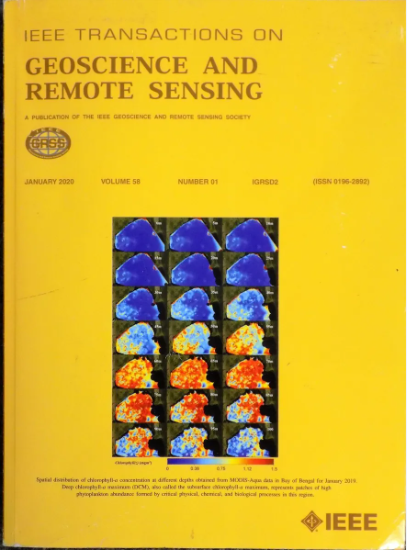Three-Dimension Spatial–Spectral Attention Transformer for Hyperspectral Image Denoising
IF 7.5
1区 地球科学
Q1 ENGINEERING, ELECTRICAL & ELECTRONIC
IEEE Transactions on Geoscience and Remote Sensing
Pub Date : 2024-09-11
DOI:10.1109/TGRS.2024.3458174
引用次数: 0
Abstract
Hyperspectral image (HSI) denoising is a crucial step for its subsequent applications. In this article, we propose TDSAT, a 3-D spatial-spectral attention Transformer model designed to effectively remove noise in HSI processing while preserving essential spectral and spatial information. The primary objective of this model is to utilize the 3-D Transformer to explore the global spectral-spatial features in HSI, learn the relationships among different bands, and preserve high-quality spectral and spatial information for denoising. The proposed method consists of three main components: the multihead spectral attention (MHSA) module, the gated-dconv feedforward network (GDFN) module, and the spectral enhancement (SpeE) module. The MHSA module learns the relationships among different bands and emphasizes the local spatial information. The GDFN module explores more expressive and discriminative spectral features. The SpeE module enhances the perception of subtle differences between different spectrums. Moreover, unlike the previous Transformer denoising method that can only handle fixed bands, the proposed method combines 3-D convolution and spectral-spatial attention Transformer blocks, enabling the denoising of HSI with an arbitrary number of bands. Experimental results demonstrate that TDSAT outperforms compared methods. The code is available at用于高光谱图像去噪的三维空间-光谱注意力变换器
高光谱图像(HSI)去噪是其后续应用的关键步骤。在本文中,我们提出了三维空间-光谱注意力变换器模型 TDSAT,该模型旨在有效去除 HSI 处理过程中的噪声,同时保留基本的光谱和空间信息。该模型的主要目的是利用三维变换器来探索 HSI 的全局光谱空间特征,学习不同波段之间的关系,并保留高质量的光谱和空间信息以进行去噪处理。所提出的方法由三个主要部分组成:多头光谱关注(MHSA)模块、门控前馈网络(GDFN)模块和光谱增强(SpeE)模块。MHSA 模块学习不同波段之间的关系,并强调局部空间信息。GDFN 模块探索更具表现力和辨别力的光谱特征。SpeE 模块增强了对不同频谱之间细微差别的感知。此外,与之前只能处理固定频段的变换器去噪方法不同,所提出的方法结合了三维卷积和频谱-空间关注变换器块,能够对具有任意频段数的 HSI 进行去噪。实验结果表明,TDSAT 优于同类方法。代码见 https://github.com/ Featherrain/TDSAT。
本文章由计算机程序翻译,如有差异,请以英文原文为准。
求助全文
约1分钟内获得全文
求助全文
来源期刊

IEEE Transactions on Geoscience and Remote Sensing
工程技术-地球化学与地球物理
CiteScore
11.50
自引率
28.00%
发文量
1912
审稿时长
4.0 months
期刊介绍:
IEEE Transactions on Geoscience and Remote Sensing (TGRS) is a monthly publication that focuses on the theory, concepts, and techniques of science and engineering as applied to sensing the land, oceans, atmosphere, and space; and the processing, interpretation, and dissemination of this information.
 求助内容:
求助内容: 应助结果提醒方式:
应助结果提醒方式:


